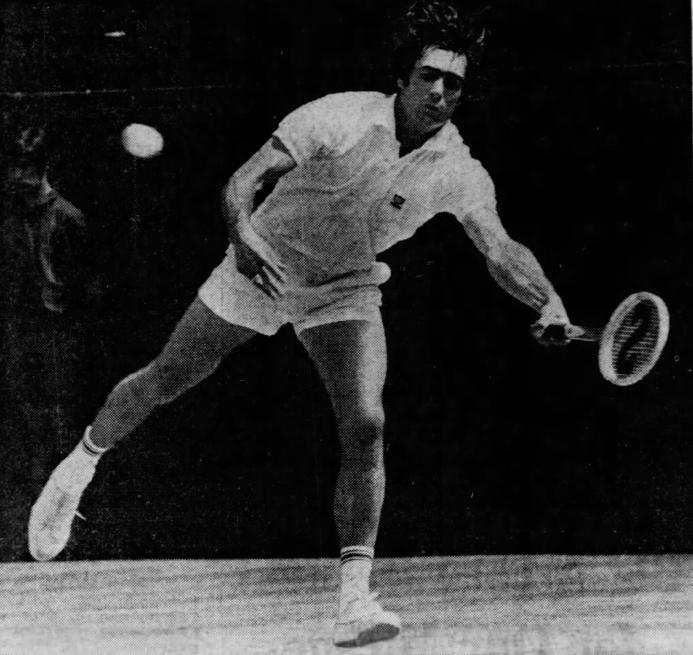With matchups like these, who needed the ATP? The 1973 Wimbledon quarter-finals pitted 31-year-old Yorkshireman Roger Taylor against the tournament’s 17-year-old sensation, Björn Borg of Sweden.
It was a study in contrasts. Taylor, a left-hander, was a veteran with an attacking serve-and-volley game. Borg was more comfortable at the baseline, where he astonished spectators with both his topspin and his go-for-broke approach whenever the opportunity for a groundstroke winner arose. Taylor had the backing of a nation; Borg the support of legions of screaming teens.
On July 3rd, the match proved as scintillating as promised. Taylor crashed his way to a 6-1 first set before the young Swede found his bearings. Borg, however, had already played two five-setters (not to mention a 20-18 tiebreak) and wouldn’t go quietly. He swung away against the Brit’s second serves, forcing Taylor to take more chances. The left-hander ultimately tallied 20 double faults.
Borg rode his high-risk backcourt tactics to a two-sets-to-one advantage. But his energy ebbed, and Taylor grabbed the fourth set with a break to love in the sixth game. The Swede swung so hard at one ball that he shattered his racket.
For a few minutes, it appeared that the contest would end in a whimper. The Brit raced out to a 5-1 lead in the fifth and earned two match points at 15-40 on Borg’s serve. Björn saved them both–with a smash winner and an ace–and suddenly it was Taylor who looked tired. Borg held serve and took control, tying the score at 5-all. Only then did the Yorkshireman find another gear, and he broke for 6-5.
Taylor reached match point again at 40-15 on his own serve. He squandered the first with a double fault. His next serve was an apparent ace, an untouchable wide delivery that failed to draw a call from either line judge or chair umpire. But Borg protested, and Taylor agreed: One point away from a Wimbledon semi-final, and the third seed called a fault against himself.
“I did not want to win on a ball which was three inches out,” Taylor said after the match.
“This was too good a match,” wrote David Gray in the Guardian, “to be ended by an umpire’s mistake.”
Borg responded with a backhand winner to tie the game at deuce. Taylor struck a service winner for a fifth match point, and sealed the victory when the Swede missed a backhand. The final score was 6-1, 6-8, 3-6, 6-3, 7-5.
More than one British journalist reached the same conclusion: Justice was done. Yes, Taylor had done the right thing when he refused to accept the match-winning ace. But it was more than that. The veteran had defied the boycott and given home fans their greatest chance of a native champion since World War II. Whatever his ATP colleagues would say about it, Taylor’s participation in the tournament was, to so many of his countrymen, nothing less than an act of bravery.
Borg, for his part, could find consolation in the teenyboppers who streamed on court after the final point was played. Unlike Taylor, he would have many more chances to win Wimbledon. “Yesterday he was good; very very good,” wrote David Talbot of the sensational Swede. “One day he will be great.”
* * *
This post is part of my series about the 1973 season, Battles, Boycotts, and Breakouts. Keep up with the project by checking the TennisAbstract.com front page, which shows an up-to-date Table of Contents after I post each installment.
You can also subscribe to the blog to receive each new post by email:
